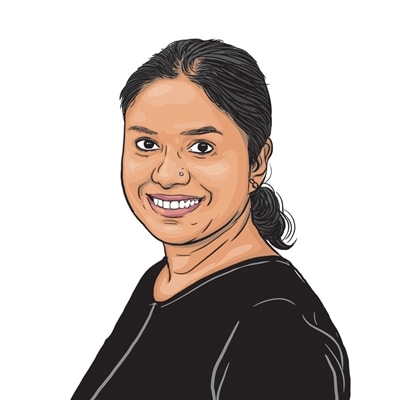Opinion For working moms, breastfeeding is a privilege
In a society where maternity leave is denied, breastfeeding in public is frowned on and everyone has an opinion on a child's nutrition, how can we ensure women have access to the support and information they need?
 Despite knowing the importance of mother’s milk for the child, for a healthy society and the environment, we now need to understand the struggles of parents, mostly mothers, who walk the tightrope of breastfeeding while working (File Photo)
Despite knowing the importance of mother’s milk for the child, for a healthy society and the environment, we now need to understand the struggles of parents, mostly mothers, who walk the tightrope of breastfeeding while working (File Photo) Five years back, when I gave birth to my daughter, I was determined to breastfeed her exclusively for the first six months. Beyond that, I had not given it much thought. After her birth, we were at the hospital for a month for an unavoidable medical procedure. Since our focus was to keep her alive, we ended up giving her formula.
To my surprise, doctors and other hospital staff ensured we relied less on formula and more on mother’s milk. A friend introduced me to support groups for breastfeeding mothers. Encouraged by all, I weaned my daughter off formula in a month and breastfed her till she was four years old. We sailed through all the growth spurts together and she outgrew this bond on her own.
When I look back, as a working mother in a nuclear set-up, I wonder if it was as easy for all working mothers. One doesn’t need to reiterate the importance of mother’s milk for a child’s early nutrition and immunity development. Yet, there seems to be a decline in breastfeeding. Is it just a gimmick by formula companies? Or do we need to think beyond?
Here, we need to think about the percentage of working women who can avail maternity leave, the time period of said leave and the impact it has on their job. The Maternity Benefit (Amendment) Act, 2017, entitles women workers to 26 weeks of paid maternity leave for their first two children.
There is a dearth of published data to understand the impact of maternity leave on exclusive breastfeeding. Workplaces in both organised and unorganised sectors need to be seen through the lens of maternity benefits and support structures provided to new mothers. While the range of these benefits varies in the organised sector, women in the unorganised sector struggle to get even maternity leave.
Till the age of one year, mother’s milk or formula is the main source of nourishment for a child. But breastfeeding even for the first year is an uphill task for working mothers. Do offices have systems in place to help new mothers continue breastfeeding? Not everyone has the privilege of an understanding environment, where a new mother can pump milk and refrigerate it in the office till she can carry it back home.
In an environment where maternity leave is denied, breastfeeding in public is looked down on and everyone gives their two cents on a child’s nutrition, how can a woman make this her own journey alone? We need to think as a society and policymakers: are we visualising a mother as a worker? Or a parent without proper support structures? Or a parent who does not have access to knowledge to debunk myths surrounding breastfeeding?
There has been a rise in feeding stations in public places, a welcome step. However, the need is to ensure that more parents are informed and supported, so they themselves choose to walk inside these feeding rooms.
My breastfeeding journey has made me more aware of my privilege to be able to do just that. I had to patiently answer many people about my choice to feed my child. Here, accessibility to information helped. I had to inform the day-care staff to handle the pumped milk properly and they followed my instructions because of my social positioning. My economic status allowed me to buy a breast pump and to store the milk in a sterile place. Behind all of this — making it a collective effort — was a partner who understood the importance of breastfeeding our child.
Despite knowing the importance of mother’s milk for the child, for a healthy society and the environment, we now need to understand the struggles of parents, mostly mothers, who walk the tightrope of breastfeeding while working. But with more women pushed to work in unorganised sectors that are plagued with minimal social security, lack of information, and lesser support networks and institutional support, exclusive breastfeeding will remain a distant reality in the present work regime.
Rani Rohini Raman is a faculty member at Azim Premji University. National Editor Shalini Langer curates the fortnightly ‘She Said’ column






